Reconnecting to the Earth and Ourselves on Dragons Lake Superior Summer Program
Posted on
12/07/21
Author
Simon Hart
Finding Connection in a World of Digital Malaise
“Before enlightenment; chop wood, carry water. After enlightenment; chop wood, carry water.” — Zen Kōan
This morning my cat, Amazae, was in the bathtub chasing his tail. Ever faster he spun in frantic circles seeking his prize, not knowing that his success would ultimately end in self-harm. Perhaps, I thought, this isn’t so different from us humans, frantically pursuing greater control of the world around us, seeking to “develop” and not knowing that this too will end in self-harm.
For me, and many others I think, the global pandemic presented a unique opportunity to ask the question, “What am I chasing? What are we chasing?” It offered an invitation to reconsider our pathway forward as individuals, and as a collective species. Do we continue to chase our tail in pursuit of ever greater technological prowess and development? What if we choose to stop? What if we choose to answer a deep yearning for reconnection to self and to the world around us?
Charles Mann describes this dichotomy as that of the Wizard and the Prophet. “The conflict”, he writes, “between these visions is not between good and evil, but between different ideas of the good life, between ethical orders that give priority to personal liberty and those that give priority to what might be called connection.”
The Good Life
This summer I had the great fortune of working with a group of Dragons students on the South Shore of Lake Superior. The course explored notions of “The Good Life” as defined by farmers, professors, ecologists and artists of both indigenous and white descent in the area.
After a year and a half confined to four walls, forced to interact with friends and family through the cold glass window of a zoom call, our collective longing for meaningful connection was palpable. We had experienced an acute and collective sense of disconnection and isolation as a result of living life virtually. But this phenomenon goes well beyond pandemic times to a longer trajectory of increased human isolation, isolation from our non-human community.
As Robin Wall Kimmerer writes in her seminal work “Braiding Sweetgrass,” “Philosophers call this state of isolation and disconnection ‘species loneliness’—a deep, unnamed sadness stemming from estrangement from the rest of Creation, from the loss of relationship. As our human dominance of the world has grown, we have become more isolated, more lonely when we can no longer call out to our neighbors. It’s no wonder that naming was the first job the Creator gave Nanabozho.”
Basket Weaving on the Shores of Lake Superior
“I’m not really into basket weaving,” one of our students mentioned in their entrance interview. Perhaps they associated the art form to a Michael’s department store, or a Martha Stewart magazine. Perhaps they didn’t realize that by ‘basket weaving’ we meant entering into communion with a fifty year-old being through ceremonial harvest, the intimate and sensual intermingling of blood and tree sap as we slice through end grain and accidentally cut ourselves. The two-million year old ‘thud’ of an axe on wood flesh, and the meditative processing of weaving the raw material of a living being into a 12,000 year-old vessel that changed the course of human history. Basket weaving can mean a lot of things depending on how we approach it.
And so, we set out this past July to find a deeper connection through the harvest of a black ash tree. Through sunshine dappled forest we walked, slowly, with Joan Elias at the head pointing out the names of plants, narrating the recent history of this 190 acres of forest in recovery.
Stewarding the Land Back to Health
Joan is our host for these five days, allowing our group to camp in an old hay field alongside a century-old barn, and her vibrant vegetable garden. She has been stewarding this land back to health for the past 31 years alongside her late husband, also an ecologist. In the early 1900s the entire Chequamegon Bay area was logged to a tree, leaving a scarred landscape that is still in the early phases of healing.
At her side is April Stone, a traditional black ash basket weaver, educator and Bad River Tribal member. April has agreed to work with our group for six days, leading us through a live harvest, the processing of raw material, and the weaving of baskets into a finished product. Today, we are here for the harvest. We are here to take a life from this forest, to remove a member of the community.
Asking for Permission
When we arrive at the adolescent black ash tree, spontaneous silence spreads through the group. April lights sage and speaks to the tree, asking permission for a harvest. Without invitation, students begin to step forward and place their hands on the tree, to talk to it, to whisper words that I do not hear on the outside of our small circle. In turn, we each step forward to acknowledge the tree, and the significance of our coming to take it.
I found myself speaking to the tree in Spanish, which seems absurd now. Perhaps it was my attempt to create a “special” connection with the tree, as we all had. I think we all wanted to show that in these last moments of its sacred life, we were willing to do what we could to extend ourselves and meet the tree on some kind of middle ground. Is this what a relationship looks like? How do we talk to trees? How do we love them? How do they want to be loved by us?
The Black Ash
‘Thud’… the first swing of the axe biting deep into the intricately patterned bark. Our violence would continue, with respect, reverence, vigor and also joy, satisfaction, and fear at each blow, moving ever deeper into the layers of the flesh, each student taking their turn at the axe. As the tree is slowly hewn away we spot dark rot within. “Oh no!” Our collective response to the concern that we had slain this tree for naught.
In a moment we felt wasteful, clumsy, wanton in our destruction. Next, we were reminded by our teacher that even if the tree would not serve for making a basket, it would be composted back into the earth, that it was already in the process of dying, and would lay on the forest floor, nourishing its kin.
The moment passes and we see that the tree will indeed serve our purpose. As we boisterously depart the forest, our trophy hoisted high on our shoulders, the abundance and emotion of our harvest takes me back to Kimmerer who writes, “Even a wounded world is feeding us. Even a wounded world holds us, giving us moments of wonder and joy. I choose joy over despair. Not because I have my head in the sand, but because joy is what the earth gives me daily and I must return the gift.”
Learning to Weave Baskets
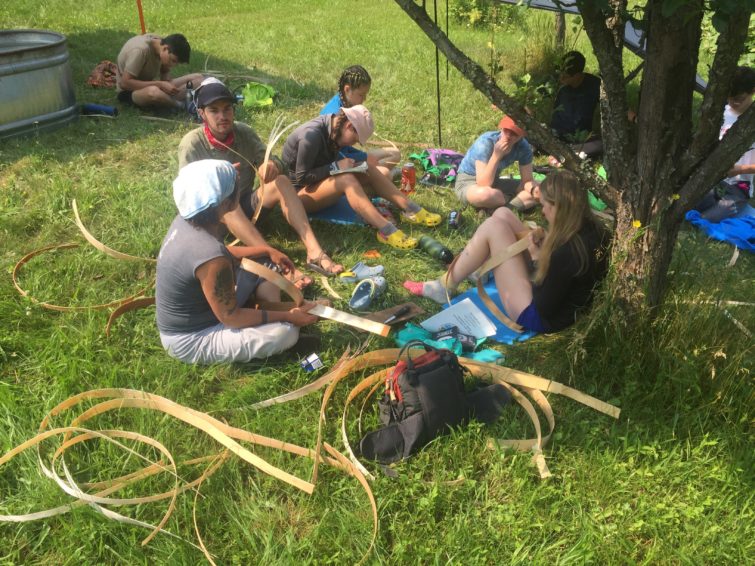
After strips of new wood are removed from the trunk students work in the shade, learning to weave their raw material into different shapes and patterns
In the shade of a century-old dairy barn, students take turns pounding along the trunk of the tree—collapsing the weaker earlywood, and liberating the latewood to be peeled off in strips. Surrounded by raspberries and flowers, and sitting in small circles sharing stories of life back home, they apprentice April through the process of cutting and weaving the strips into small receptacles.
The smell of freshly harvested black ash fills the nostrils, and the time passes without warning. Over the next five days we become intimately familiar with the tree, the texture of the strips, the way the material plies and shapes.
On our final day with April, we head out to Mooningwanekaaning, or Madeline Island. We set up our small camp looking east across 200 miles of open fresh water and settled in to finish our baskets. As dinner is prepared by a group of students, others head into the woods and return with an abundance of wintergreen leaves and berries, wild blueberries and service berries.
Connection to Each Other and the Earth
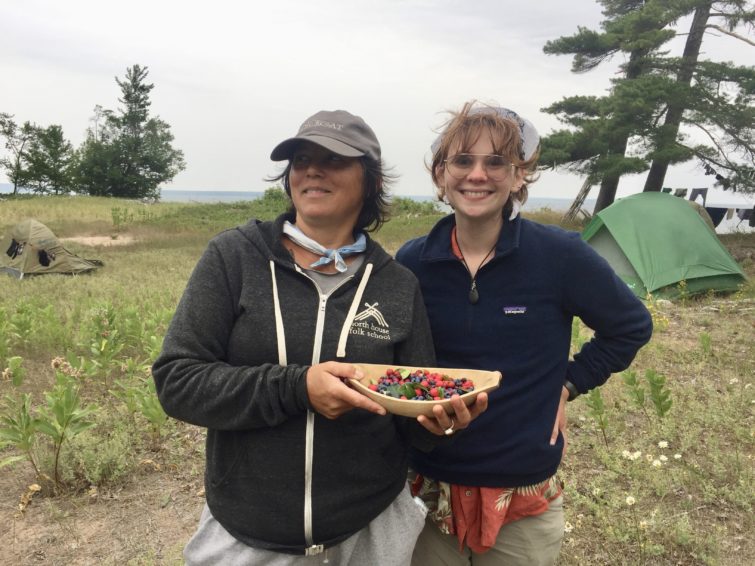
April and Cricket return from a harvest of wild blueberries, service berries and wintergreen along Lake Superior.
The web of relations is strong. One harvest has led to another, and now we know the names of a few more plants, have put their fruit to our lips, have tasted the forest, seen how it grows together in a tightly knit community. We are a part of that community and are compelled to ask ourselves all the questions related to what it means to be in community, to be a part of the exchange of energy and life.
That night, we sat together around the fire sharing our life stories, allowing our personal identities, struggles, values, and experiences to weave together like so many strands of a basket. These connections we feel to each other and the earth are born of the intermingling of sap and blood, the physical, carnal, emotional exchange we share through the thud of the axe, the silent moment of whispers in the forest, or the stories we share as we weave on the beach. These are precisely the “connections” that Charles Mann speaks of when describing the way of the Prophet. And in these simple tasks—chopping wood, carrying water, (weaving baskets)—we experience interconnectedness and belonging.
To experience a slice of the good life, wild harvests, starry nights on the beach, and the power of basket weaving while connecting to the land, check out our Summer Course Lake Superior: The Good Life here. This course runs from July 5 – 30, 2022.

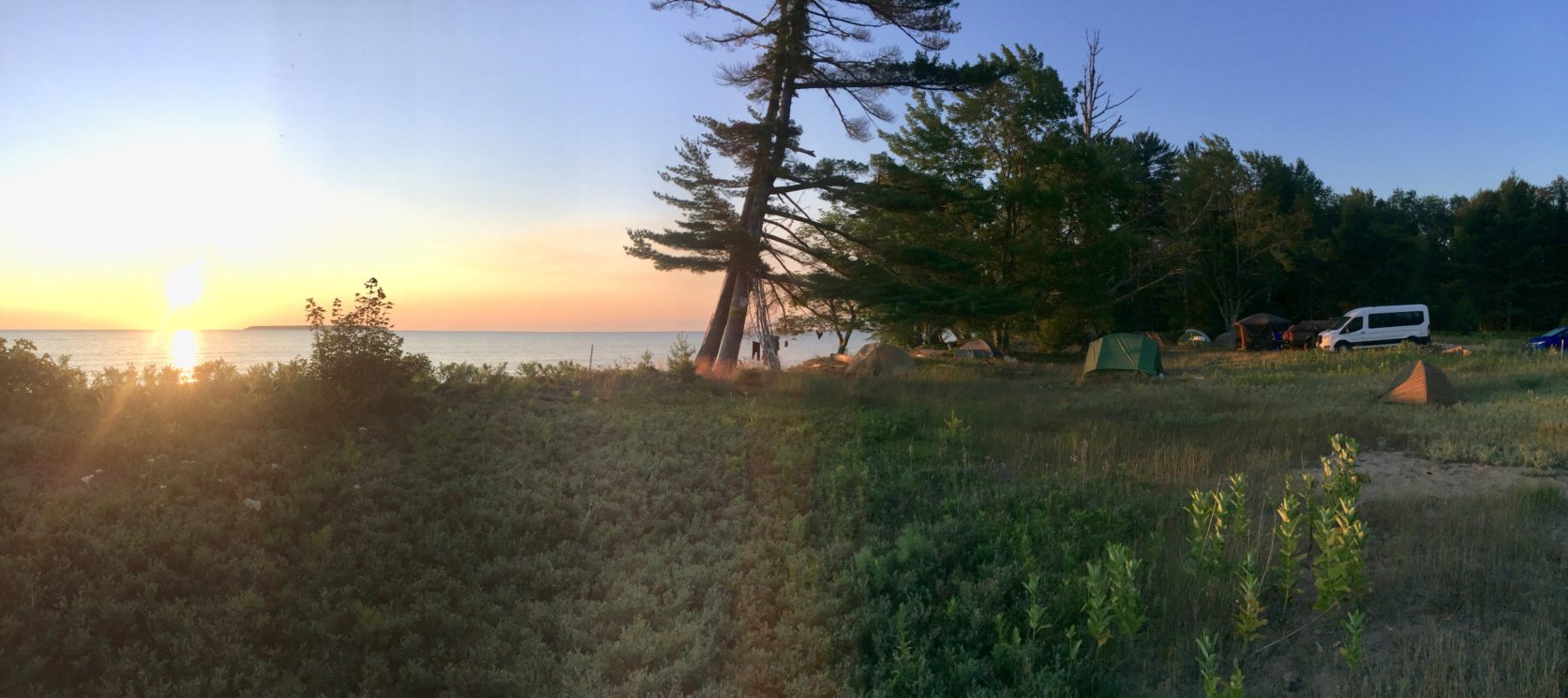
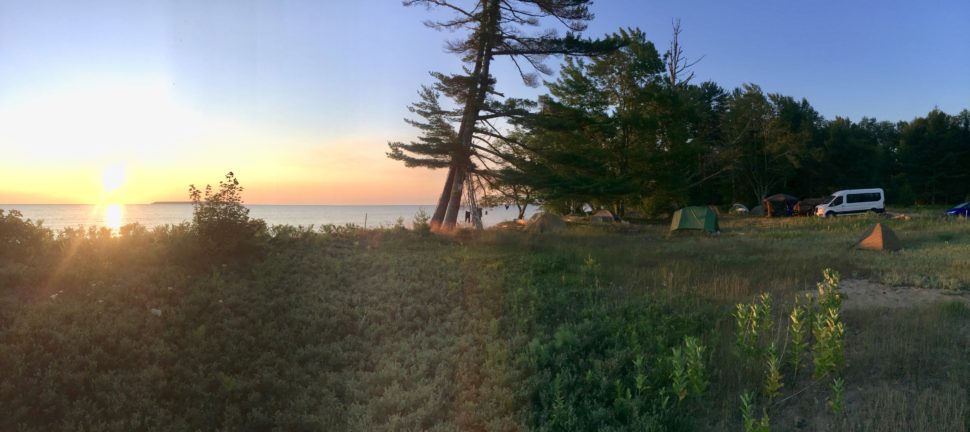
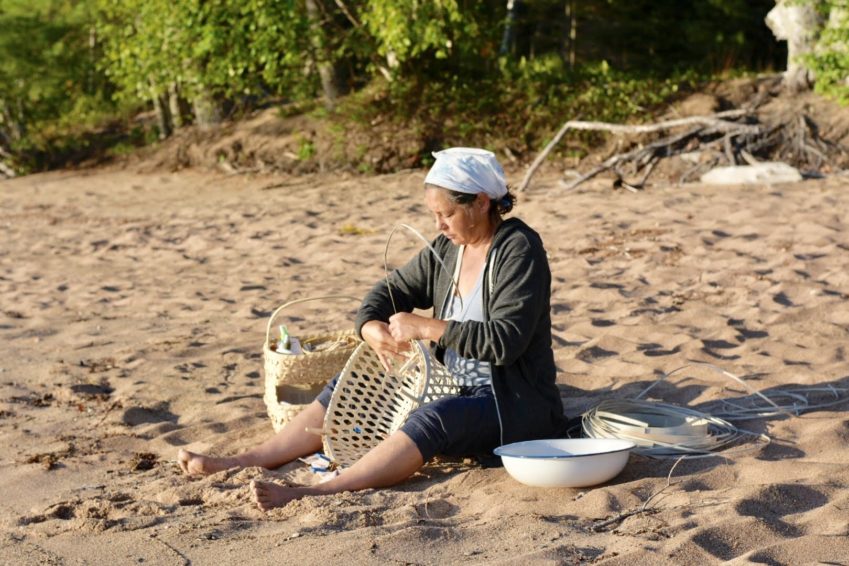
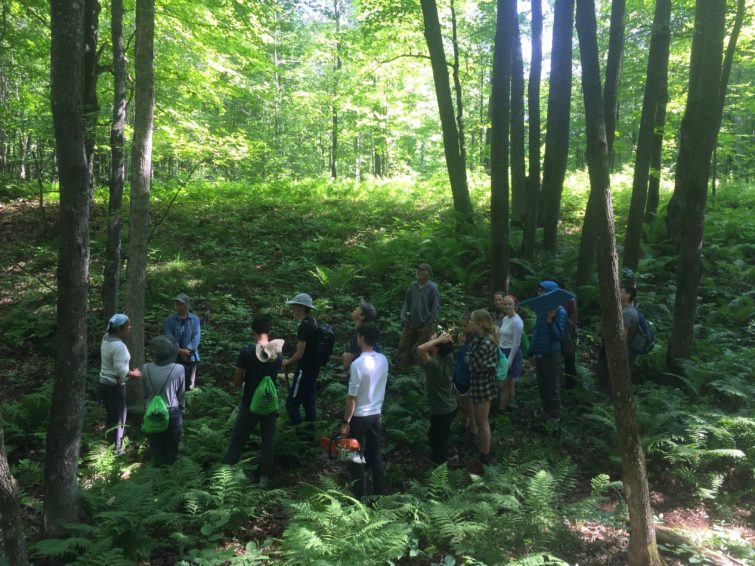
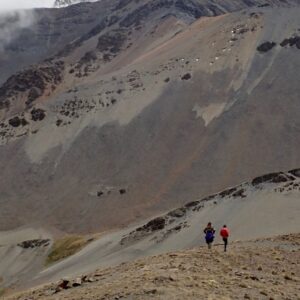
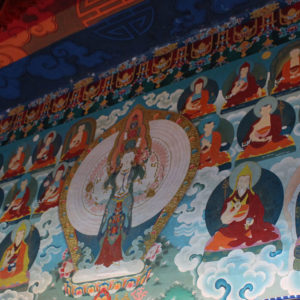
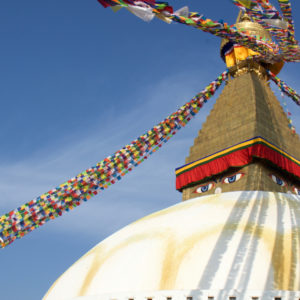
Leave a Comment